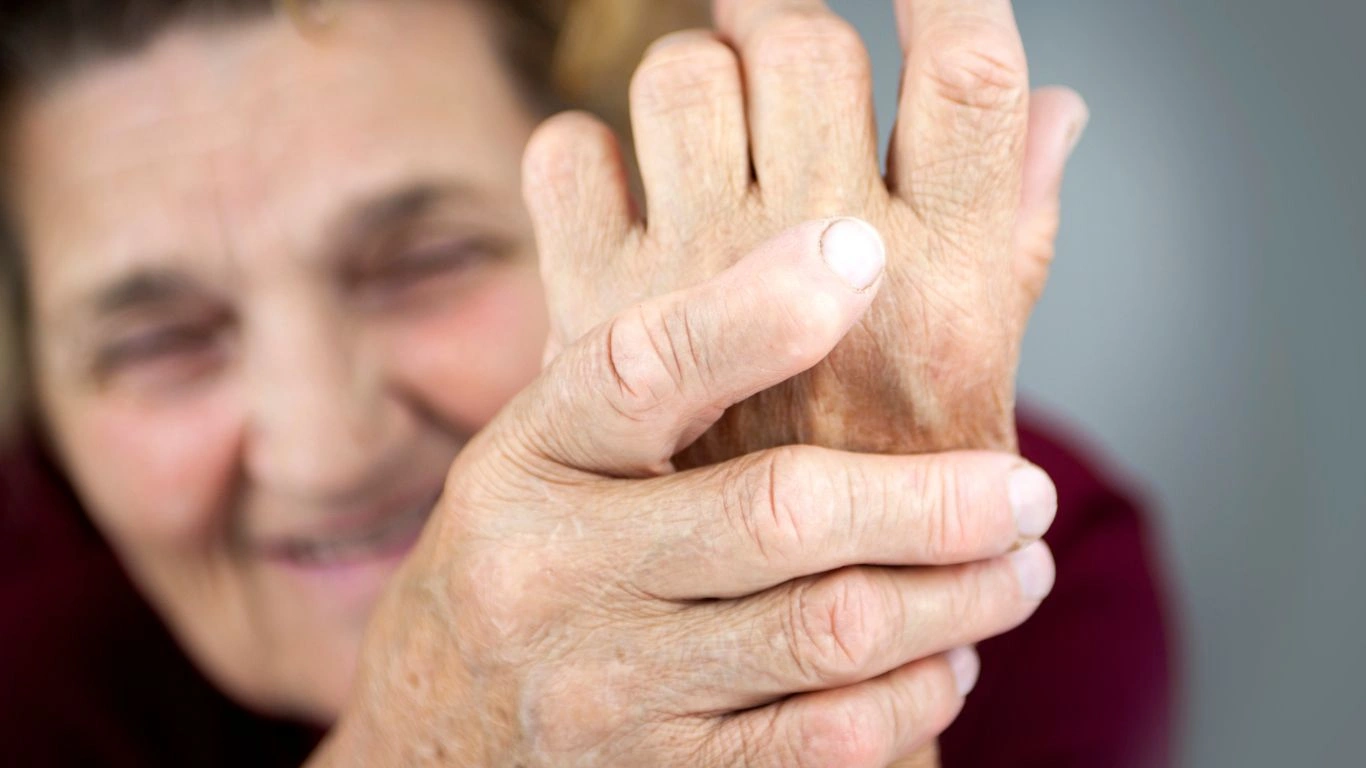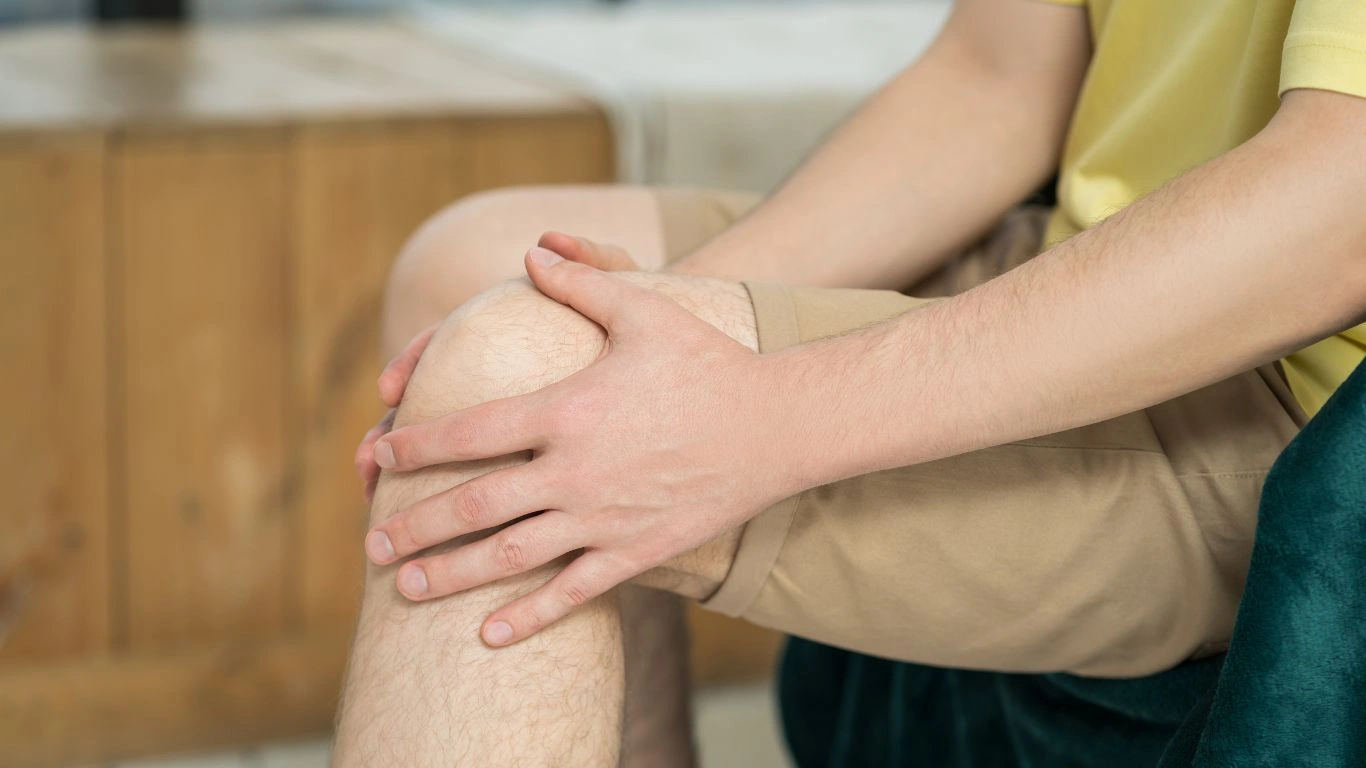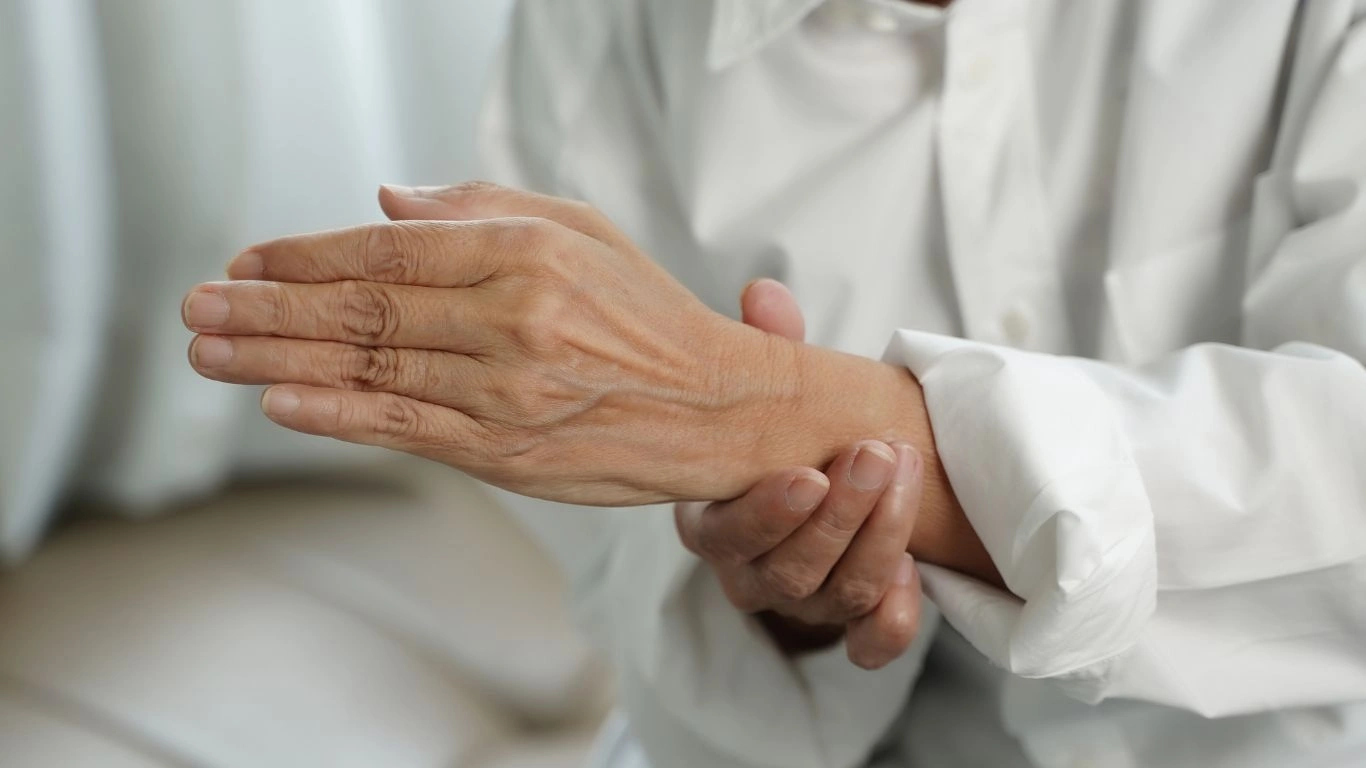Best Lifestyle Adjustments to Manage Rheumatoid Arthritis
Rheumatoid arthritis (RA) is more than just a condition that affects the joints—it can significantly impact daily life. As a Rheumatology Nurse Practitioner, I’ve had the privilege of helping countless patients navigate this complex and often debilitating disease. But beyond medications and treatments, one of the most effective ways to manage RA is through making key lifestyle adjustments.
In this article, I’ll walk you through some of the most important lifestyle changes that can help you live a full, active life with rheumatoid arthritis. From managing stress to dietary modifications, every little bit counts. I’ll also share insights from my personal experience working with patients, so you can get a sense of what’s worked for others and what might be worth trying for yourself.
Understanding Rheumatoid Arthritis: A Foundation for Lifestyle Changes

Before diving into the lifestyle changes, it’s important to have a solid understanding of rheumatoid arthritis itself. RA is an autoimmune disease that causes inflammation in the joints, leading to pain, swelling, and potential joint damage over time. It typically affects the hands, wrists, knees, and feet, although it can impact any joint in the body. Unlike osteoarthritis, which is primarily wear-and-tear related, RA occurs when the body’s immune system mistakenly attacks healthy tissue. This makes it a chronic condition that requires continuous care and attention.
Though there’s no known cure for RA, managing the symptoms effectively can make a world of difference. And that’s where lifestyle adjustments come into play. Whether it’s incorporating gentle exercises, optimizing your diet, or finding ways to reduce stress, these changes can dramatically improve your quality of life.
Why Lifestyle Adjustments Matter for Managing Rheumatoid Arthritis

As someone who’s seen first-hand the profound impact that lifestyle changes can have on people living with RA, I can say with confidence that a holistic approach to managing the condition is one of the most powerful tools in any patient’s arsenal. While medications like DMARDs (disease-modifying antirheumatic drugs) and biologics are essential for controlling inflammation and slowing disease progression, lifestyle adjustments can help complement these treatments in ways that medications alone can’t. Whether it’s improving mobility, boosting your energy, or managing pain, small shifts in daily habits can lead to big improvements over time.
Incorporating lifestyle changes isn’t just about feeling better physically; it’s about nurturing your mental and emotional well-being as well. Chronic conditions like RA can often feel isolating, and managing the condition long-term can lead to feelings of frustration or helplessness. But making thoughtful lifestyle choices can give you a sense of control, empowering you to take an active role in managing your health.
Key Lifestyle Adjustments to Make When Living with Rheumatoid Arthritis
1. Diet: Fueling Your Body for Better Joint Health

What you eat plays a significant role in managing rheumatoid arthritis. While there is no “RA diet” per se, certain foods are known to either reduce inflammation or exacerbate it. As I’ve seen with many of my patients, making thoughtful food choices can help lower pain levels and improve overall well-being.
- Anti-inflammatory foods: Think of foods rich in omega-3 fatty acids, like salmon, flaxseeds, and walnuts. These help reduce inflammation and may alleviate joint pain. Leafy greens, berries, and nuts are also great additions to an anti-inflammatory diet.
- Avoiding processed foods: Highly processed and sugary foods can trigger inflammation, potentially worsening RA symptoms. Cutting back on processed snacks, fast food, and sugary drinks can help lower your body’s overall inflammation.
- Vitamin D and calcium: Since RA can lead to joint damage and a higher risk of osteoporosis, it’s essential to include sources of calcium and vitamin D in your diet. Think dairy, fortified plant milks, and green leafy vegetables.
I’ve worked with patients who reported feeling a noticeable difference after changing their diet. Some noticed less swelling and pain within a few weeks of incorporating more anti-inflammatory foods into their meals. It’s all about taking baby steps, finding what works for your body, and sticking with it.
2. Exercise: Moving to Improve Mobility and Strength
It may seem counterintuitive to exercise when your joints are hurting, but the right kind of exercise can actually help reduce pain and improve mobility. Gentle, low-impact exercises like swimming, walking, or cycling can help maintain joint function and keep muscles around the joints strong and flexible.
Personally, I’ve had patients tell me that consistent, low-intensity exercise has helped them manage flare-ups more effectively. It’s about finding the balance between pushing your body just enough to reap the benefits without overdoing it. For example, stretching can help maintain joint flexibility, while strength training exercises can support muscles and prevent further damage to the joints.
- Stretching and range-of-motion exercises: These can help reduce stiffness and improve joint flexibility.
- Strength training: Building muscle around the affected joints can offer support and reduce strain on the joints.
- Aquatic therapy: Water buoyancy helps reduce stress on the joints, making swimming or water aerobics a great option for RA patients.
The key is to listen to your body—if something hurts, stop. If something feels good, keep going. If you can, work with a physical therapist to develop an exercise routine tailored to your specific needs and limitations.
3. Stress Management: Protecting Your Mind and Body
Chronic stress is another factor that can trigger flare-ups of rheumatoid arthritis. It’s no secret that stress can wreak havoc on our bodies, and for those with RA, it can exacerbate pain and inflammation. As a nurse practitioner, I’ve often seen the difference in how my patients respond to RA when they are stressed versus when they’ve implemented stress management techniques.
Some of the most effective stress-relief practices include mindfulness, meditation, and deep breathing exercises. These techniques can help lower cortisol levels (the stress hormone) and promote relaxation. I’ve also seen patients benefit from yoga and Tai Chi, which combine gentle movements with mindfulness and deep breathing, offering a holistic approach to stress management.
- Meditation: Practicing mindfulness meditation can calm the mind and reduce inflammation.
- Yoga and Tai Chi: These gentle movements focus on flexibility and balance while reducing stress.
- Deep breathing exercises: Taking a few minutes each day to focus on deep breathing can help relax the body and mind.
Incorporating some form of stress management into your daily routine can make a significant difference in how you cope with both RA symptoms and the mental toll of chronic illness.
Improving Sleep Quality with Rheumatoid Arthritis

Sleep disturbances are a common issue for people with rheumatoid arthritis. Whether it’s due to pain, inflammation, or even medications, many RA patients find themselves tossing and turning at night, trying to find a comfortable position. As someone who’s worked closely with patients managing RA, I’ve seen how poor sleep can have a ripple effect, worsening fatigue, stress, and even contributing to more intense pain.
Getting enough quality sleep is essential for overall health, but especially for managing rheumatoid arthritis. Research shows that insufficient sleep can increase inflammation and pain, making it even harder to manage RA symptoms. But the good news is, there are ways to improve sleep quality, even with RA. Below are some tips that have worked for my patients:
- Maintain a consistent sleep schedule: Going to bed and waking up at the same time every day can help regulate your body’s internal clock and improve the quality of your sleep. Even on weekends, try to keep your schedule as consistent as possible.
- Create a bedtime routine: Engage in relaxing activities before bed, like reading, listening to calming music, or practicing gentle stretches. A predictable routine signals to your body that it’s time to wind down.
- Optimize your sleep environment: Make your bedroom a sanctuary for sleep—keep it cool, dark, and quiet. Consider using earplugs or a white noise machine if you’re sensitive to sound. A supportive mattress and pillows can also help reduce pain while you sleep.
- Manage pain before bed: Try using a heating pad or taking a warm bath to relax your muscles and joints. If pain is preventing you from falling asleep, talk to your healthcare provider about possible solutions.
It may take some trial and error to figure out what works best for you, but making sleep a priority is worth it. Remember, a good night’s rest can make all the difference when it comes to managing both the physical and emotional aspects of RA.
Adapting Your Home and Work Environment for Rheumatoid Arthritis

Another significant aspect of living with rheumatoid arthritis is making sure your environment supports your needs. This goes beyond simply reducing pain and discomfort—it’s about creating a space that helps you move and function as efficiently as possible. As someone who works with patients on a daily basis, I’ve witnessed the difference that home and work modifications can make. These small adjustments might feel simple, but they can dramatically improve your quality of life.
Home Modifications to Make Life Easier
At home, there are several modifications you can make to accommodate for decreased mobility or joint pain. You don’t need to make huge changes, just small tweaks that allow you to move around more comfortably and safely.
- Grab bars and handrails: Installing grab bars in the bathroom or along stairs can provide additional support, reducing the risk of falls. A handrail in the bathroom or near the toilet can make a huge difference in your ability to maintain balance.
- Ergonomic furniture: Invest in furniture that promotes better posture and is easy to get in and out of. Recliners with leg support, chairs with armrests, and beds that are adjustable can be incredibly helpful for someone with RA.
- Easy-to-use tools: Kitchen gadgets, jar openers, and reachers can help you perform daily tasks with less strain. Look for adaptive tools that reduce the need for grip strength or twisting motions.
- Non-slip mats: In areas like the bathroom or kitchen, non-slip mats or rugs can help prevent falls. If you use a walker or cane, be sure your floor surfaces are smooth and free of obstacles.
Workplace Adaptations for Rheumatoid Arthritis
If you work full-time or part-time, adjusting your workplace environment to accommodate your RA can make a big difference in how well you function throughout the day. Whether it’s physical modifications or finding ways to reduce stress, these changes are essential for managing your RA in a work setting.
- Ergonomic workstation: Make sure your desk, chair, and computer are set up in a way that minimizes strain on your joints. An adjustable chair with proper lumbar support and a desk that allows you to sit comfortably can reduce the pressure on your back, hips, and wrists.
- Frequent breaks: RA can make sitting or standing for long periods challenging. Setting a timer to remind you to take breaks can help reduce stiffness. Standing or walking for a few minutes every hour can keep your joints from becoming stiff or painful.
- Assistive devices: Use voice-to-text software or dictation tools to reduce the need for typing if hand pain is an issue. Other devices, like hands-free phone headsets, can also help reduce strain on your joints.
It’s worth having a conversation with your employer or HR department about your needs. Many workplaces are open to making accommodations that allow you to work more comfortably and efficiently while managing RA.
Social Support: Building a Network for Rheumatoid Arthritis

Living with a chronic condition like rheumatoid arthritis can sometimes feel isolating. Many of my patients have shared how the emotional toll of RA can be just as challenging as the physical pain. This is why building a strong support system is essential for managing RA. Having a group of people who understand what you’re going through can help reduce stress, combat feelings of isolation, and provide emotional support during difficult times.
There are several ways to build your support network:
- Support groups: Joining an RA support group, whether in person or online, can be an incredibly helpful way to connect with others who are going through similar experiences. These groups provide a space for shared advice, encouragement, and solidarity.
- Close family and friends: Having a few trusted friends or family members you can rely on can make a world of difference. Don’t be afraid to lean on them for emotional support or practical help, whether it’s running errands or just having someone to talk to.
- Therapy or counseling: Sometimes, talking to a professional can help you process the emotional and mental challenges of living with RA. A counselor or therapist can help you develop coping strategies and provide tools to manage anxiety or depression.
Having a solid support system not only helps you cope with RA but can also boost your overall health and resilience. When you have people who care about you and understand your struggles, it becomes easier to stay positive and motivated throughout the ups and downs of living with rheumatoid arthritis.
Managing Medication and Treatment for Rheumatoid Arthritis

While lifestyle changes are crucial for managing rheumatoid arthritis, they often work best when combined with appropriate medical treatments. RA is a complex disease that requires individualized care, and finding the right balance between medication and lifestyle adjustments can significantly improve your overall health. As a Rheumatology Nurse Practitioner, I’ve had many conversations with patients about the importance of sticking to prescribed treatments while also making lifestyle improvements that can enhance their quality of life.
Medications play a central role in controlling RA’s symptoms and slowing its progression. Disease-modifying antirheumatic drugs (DMARDs) are often the first line of defense, but there are also biologics, corticosteroids, and nonsteroidal anti-inflammatory drugs (NSAIDs) that help manage symptoms like pain and inflammation. However, the effectiveness of these treatments can vary from person to person, and it’s essential to work closely with your doctor to find the right combination.
Types of Medications Commonly Used for RA
Understanding the types of medications available and how they work can help you take an active role in your treatment plan. Here’s a brief overview of the most common options:
- DMARDs (Disease-modifying antirheumatic drugs): These are typically the first treatment prescribed for RA and are designed to slow or stop the progression of joint damage. Methotrexate is the most commonly used DMARD, but there are others like sulfasalazine and hydroxychloroquine.
- Biologics: Biologic drugs target specific components of the immune system that cause inflammation. They are often prescribed when DMARDs are not effective. Examples include tumor necrosis factor (TNF) inhibitors, such as Enbrel or Humira.
- Corticosteroids: These are powerful anti-inflammatory medications that can help reduce pain and swelling during RA flare-ups. Prednisone is a common corticosteroid used in RA treatment.
- NSAIDs (Nonsteroidal anti-inflammatory drugs): These medications help relieve pain and reduce inflammation. Over-the-counter options like ibuprofen or naproxen are often used, but stronger prescription versions may also be prescribed in some cases.
It’s essential to remember that no medication can cure RA, but they can significantly reduce symptoms and improve function. One of the challenges I often discuss with patients is the importance of patience when finding the right medication combination. It can take time to see the full benefits, and adjustments may be needed along the way. So, be open with your healthcare provider about what’s working and what isn’t.
Complementary Therapies: Exploring Alternative Options
In addition to traditional medications, many RA patients seek complementary therapies to help manage pain and improve well-being. These therapies can be a great addition to a treatment plan, but it’s essential to use them in conjunction with, not as a replacement for, prescribed medications. Here are a few complementary options that have shown promise:
- Acupuncture: Some people find relief from RA pain and stiffness through acupuncture, which involves inserting thin needles at specific points on the body to stimulate energy flow and reduce inflammation.
- Massage therapy: Gentle massage can help reduce muscle tension and improve circulation, which may relieve some of the discomfort associated with RA. It’s especially helpful for patients with tight muscles or stiffness.
- Supplements: While not a substitute for medication, some supplements like omega-3 fatty acids, turmeric, and ginger have anti-inflammatory properties and may help reduce symptoms. Always consult with your doctor before adding any new supplements to your routine.
- Physical therapy: Working with a physical therapist can help improve joint function, increase strength, and reduce pain. They can also provide personalized exercises to help you move more efficiently and avoid further joint damage.
These complementary therapies can enhance your treatment plan and provide additional relief, but they should always be discussed with your healthcare provider to ensure they are safe and appropriate for your specific condition.
Staying Positive and Motivated: The Mental Health Aspect of RA

Living with rheumatoid arthritis is challenging, both physically and emotionally. I’ve often seen how patients with RA can experience feelings of frustration, sadness, and even depression due to the unpredictability of the disease and the limitations it places on daily activities. Managing these emotional aspects is just as important as managing the physical ones. It’s critical to acknowledge the mental toll RA can take and find ways to stay positive and motivated, even on tough days.
One thing I emphasize to my patients is the importance of self-compassion. RA is a chronic disease, and it’s normal to have both good and bad days. Be kind to yourself during flare-ups or days when you feel particularly fatigued. Remember that you’re doing the best you can, and it’s okay to take breaks or ask for help when needed.
Staying connected with others is another key to maintaining mental health. Having a support network, as mentioned earlier, can help you feel less isolated. Whether it’s through family, friends, support groups, or even online communities, having people to share your experiences with can provide much-needed emotional support.
Additionally, developing a sense of purpose outside of your condition can boost your mood and keep you engaged in life. Pursuing hobbies, engaging in activities you enjoy, or setting small, achievable goals can help you stay motivated and focused on the positives in your life.
References
Disclaimer: The information in this article is based on my personal experience as a Rheumatology Nurse Practitioner and should not be considered as medical advice. Always consult with your healthcare provider before making any changes to your treatment plan, diet, or exercise routine. This article is for informational purposes only.

Tarra Nugroho is a dedicated Nurse Practitioner with a strong foundation in family and preventive care. She brings both compassion and clinical expertise to her practice, focusing on patient-centered care and health education. As a contributor to Healthusias.com, Tarra translates medical knowledge into clear, empowering articles on topics like women’s health, chronic disease management, and lifestyle medicine. Her mission is simple: help people feel seen, heard, and informed—both in the clinic and through the content she creates. When she’s not caring for patients, Tarra enjoys weekend hikes, plant-based cooking, and curling up with a good health podcast.






